The Complete List of Different Types of Coffee and Coffee Drinks
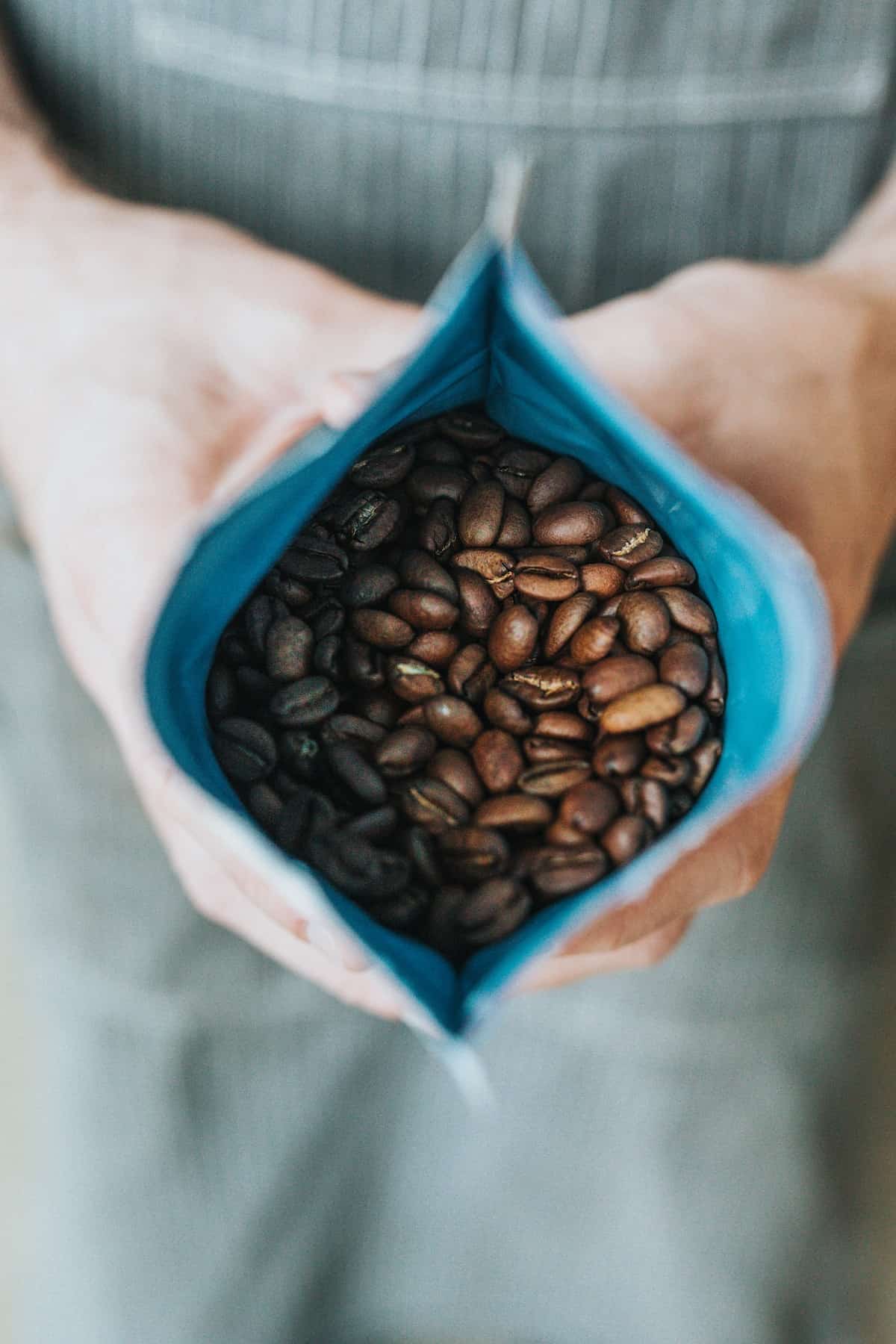
What’s behind the black beverage that we daily drink? What’s behind a good cup of coffee? Perhaps you checked the package of the beans you purchased and know that they’re Arabica from Brazil, but that’s how far the package says. Or perhaps you asked your favorite barista and were overwhelmed with a lot of technical jargon like “fully washed” or “superfine grind”.
What does it all mean? That there are plenty of different types of coffee out there. Not all are the same type of beans (Arabica and Robusta are the most common but not the only ones), nor every coffee is brewed in the same way (an espresso is visually before than aromatically very different from a latte). Nor that every coffee bean out there comes from the same variety of the coffee plant (hint, there are tens of varieties of it). Nor that a slightly different coffee to milk ratio can make a huge difference on the end result, to the point that what you thought was a latte is not any more that.
It’s a bit of a mess. To bring a bit of order to how coffee is cultivated, how it is processed and all the various ways it is brewed and served to you, we prepared a not-so-short guide on all the types of coffee out there. Starting from the different types of beans, to the, many, brewing methods, to the most popular ways coffee is drank. In the end you’ll hopefully have a very clear idea of what to order next time you’ll be at your favorite café or shopping for new beans at your local store.
Let’s start then from the very beginning of it all, the coffee plant.
What are the types of coffee beans
The coffee plant is scientifically known as the genus Coffea, in the family of Rubiaceae. That simply means that there’s a larger family of different plants to which the coffee one belongs to, and that there are many “children” that are all coffee plants but of various species, with similar characteristics but somewhat diverse. Some have larger beans, others are more disease-resistant, others still with a darker foliage and so on.
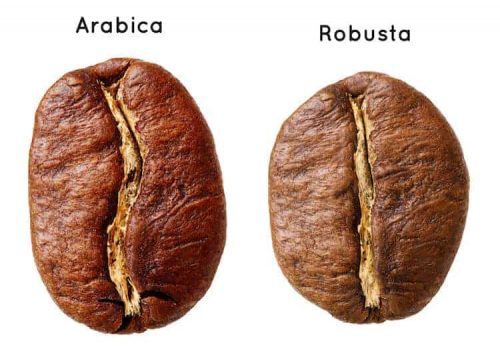
This whole group of “children” is made of 120 different species. Among them, Arabica and Robusta are by far the most known and the most cultivated, making up over 90% of all coffee harvested worldwide. Any coffee drinker will have drank both during their lives, but not necessarily any other. The 118 remaining species of the coffee plant represent a tiny percentage of all the types of coffee you can purchase, and some are available only in some countries, or analysed in laboratories and not commercially purchasable. This mostly for historical reasons. They are not “worse” than Arabica or Robusta, just less widespread, less known or less adaptable to the environment.
But let’s see first the most common type of coffee beans: the Arabica. Considered the most flavorful ones, at least among only those which are commercially grown, it makes for about 60% of all the coffee production worldwide. Plenty of “100% Arabica” coffee out there, as you surely have noticed. These beans are originally from Ethiopia, as the whole coffee plant genus is, and today are cultivated in every coffee growing country. In some it is a minority crop, in others nearly the 100% of all coffee.
The main alternative to Arabica beans is Robusta. A different species of the coffee plant, it is slightly more disease-resistant and can grow in more types of environments than the Arabica which made it popular in poorer areas of the world or where the conditions weren’t exactly the best for the more renowned species. Where Arabica is often sweet, fruity and high in acidity, Robusta is heavier in body, less flavorful but with a punchier taste profile, that shines when roasted dark.
Arabica and Robusta play the largest part in the coffee market worldwide, but a couple of other species are locally very popular. You may have heard of Liberica beans, for instance. These come from a species originally from West Africa, but nowadays mostly grown in the Philippines and Malaysia. It produces a much larger bean than both Arabica and Robusta; it is quite flavorful but is hard to find as it has a limited supply. It is lower in caffeine than both Arabica and Robusta.
Another type of bean is Excelsa. It used to be considered a separate species, but recently it was reclassified as the same as Liberica. As it tastes quite different from Liberica, some keep considering them as separate. Excelsa beans are large but not as large as Liberica beans, it is fruity, tart, and complex, and often added to coffee blends of Arabica and Robusta to give a twist to the taste profile. It is grown only in South East Asia, and has a limited output, making it quite rare.
These 4 species are basically what we think of “coffee beans”, as they represent over 99% of all beans available worldwide. The other species are so rare that they can be practically ignored for commercial consideration.
What is coffee variety?
A term that can be heard often when talking about coffee is “variety” or “varietals”. These terms are somewhat technical, so bear with me for a moment. A coffee variety is a classification term that identifies a specific subspecies of the coffee plant. A variety is a step below a species, descending from them. A coffee varietal is used for the resulting brew or product that comes from a singular variety of coffee. Varietals may be natural, hybrid of multiple varieties, mutations and so on.
That’s the botanic definitions of variety and varietal. From a consumer’s standpoint, these all mean that the plant differs a bit from another variety or varietals within the same species: it may have larger leaves, beans of a peculiar shape, it may need more time to bring beans to ripeness, and other tiny differences. More importantly, each variety or varietals have developed a different taste profile for their beans, resulting in a wholly new type of coffee to the taste.
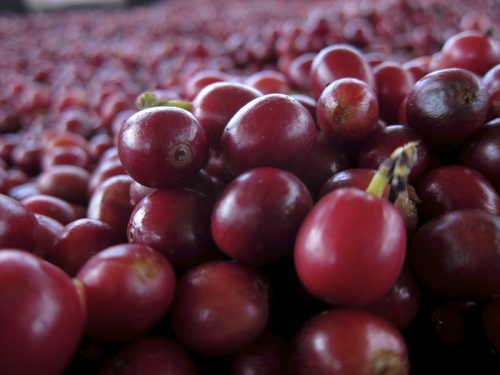
The most famous and cultivated varieties are derived from the Arabica beans. As these types of beans are the most complex and flavorful, it only makes sense that interbreeding and mutating them may result in the largest array of flavors. Some of these varieties are highly sought after and can raise high prices at coffee auctions (where international buyers pay the growers for their harvest). Let’s see some of the most common varieties.
Typica is one of the oldest and most widespread varieties of Arabica. It started in Yemen before being brought to India, already five centuries ago. It is today grown nearly everywhere there’s the climate for coffee cultivating. It is the base from which a lot of super-known regional coffee is made of. Names like Kona, Jamaica Blue Mountain, Yirgacheffe, Sidamo, Mocha, Sumatra, Harrar and many, many others, are among the best beans you can taste.
A sub variety of Typica is Bourbon. Named after the island of Reunion in the Indian Ocean before it was renamed as it is called today, Bourbon was planted in South and then Central America, where it quickly became the most popular coffee variety there. A lot of Latin America coffee is of the Bourbon variety. Origins like French Mission, Kenya Selected, SL35, Caturra, Pacas are well known to coffee experts and represent the best of what the Bourbon beans can produce.
An interesting and recent variety of Arabica is Geisha. It was normally grown in Ethiopia, near the village from where it took its name, and wasn’t much popular until the 1950s. Then it was transplanted in Panama where the production took off, with excellent results. Its popularity then skyrocketed and made the name Geisha synonymous with high-quality beans.
A bunch of other coffee varieties exist. Making a list of them all will require a, large, book. Most of them are rare though and hardly found in the beans of your favorite brands or served to you in a café. For sure, Typica, Bourbon and Geisha are among the most common ones, and each one of great quality.
What are the types of coffee drinks?
Now that you know more about what are the differences between the coffee plant species, and that there is more than one, and you know what a variety and a varietal are, you know the base. Starting from a specific variety or type of beans means being able to produce a specific type of coffee, with a specific taste profile. Experts know the most common characteristics of each variety/varietal and use them to select the right beans for the right type of coffee drink. If a naturally sweet coffee is desired, they will go with beans that have an inherent sweetness to them. If a strong and bold coffee is wanted, probably a bit of Robusta beans will be used.
Therefore, the beans are the base of making the right coffee for the right occasion. The way coffee is brewed is the next step. A good bean that is brewed in not the most optimal way for its characteristics will result in a subpar experience. On the other hand, an average bean that is brewed in a way that enhances its features will overall taste better.
From this, it is natural that numerous coffee drinks were invented to express all the flavors and aromatics that the various types of coffee have. Then adding other ingredients, like milk, can enhance it further the taste profile of the chosen beans.
The most basic, and the original way to brew and serve coffee, is simply black coffee. It can be brewed in many, truly many, ways, but it is always served straight: just the coffee. Once you add a sweetener, usually sugar or milk, you have not a “black” coffee anymore but a different type of coffee drink. With milk there are countless recipes that make drinking coffee an unique experience every day. Some add water to coffee to dilute it, making even more interesting variants. The most commonly known milk or water-based types of coffee drinks are:
- Café au lait: strong coffee with about the same amount of hot milk.
- Vienna coffee: coffee, sometimes espresso, made with whipped cream on top and milk.
An espresso can be considered a variant of black coffee. It is technically black coffee too, unless you add milk after, but its method of extraction is so unique that it is generally considered an alternative, separate, to black coffee. It is also one, if not the most, drunk type of coffee drink in the world. There are an impressive number of variants of an espresso, or drinks based on it. Some of the most common are:
- Ristretto: a shorter espresso. Around half the size of a normal espresso.
- Lungo: a longer (lungo is “long” in Italian) espresso. Roughly three times the amount of water used for a single espresso.
- Doppio: double the amount of an espresso. It’s equivalent to have two espresso in one.
- Espresso con panna: an espresso served with whipped cream on the top.
- Caffé Americano: an espresso where hot water is added after the brew, creating a much diluted coffee.
- Cortado: an espresso with a small amount of warm milk.
- Breve: an espresso served with half milk and half cream.
- Cappuccino: one third espresso, one third steamed milk and one third frothed milk.
- Macchiato: similar to a cappuccino but without the frothed milk and with less milk in total.
- Latte: an espresso with large amounts of milk (1:3 or 1:5 coffee to milk ratio).
- Flat white: similar to a latte but with a more balanced ratio of coffee to milk and a different milk texture (somewhat “flat”).
Plus plenty of others. You get the idea by now that espresso is the base for a lot of the coffee drank worldwide every day, and you aren’t wrong at all. The world of coffee wouldn’t be what it is today if espresso wasn’t invented around a century ago. But any of these drinks can be also made with success using normal black coffee, brewed without an espresso machine.
Coffee is generally brewed hot. Hot water is pushed through the grounds, extracting the solids and aromatics present in the beans, and you end up with a delicious cup of coffee, hopefully. But it is not the only way, as it is possible to extract coffee with cold water too. A cold brew is a method to make black or milk-based coffee drinks that involve steeping in the grounds in room temperature water for a long time (hours). The slow extraction gives a specific taste to the coffee, that is generally appreciated by those who like their coffee flavorful but not bitter. A popular type of coffee drink that is based on cold brewed coffee is the Nitro coffee. It adds nitrogen gas to the coffee, making it sparkling like it was a beer but with all the flavors coming from the cold extraction process.
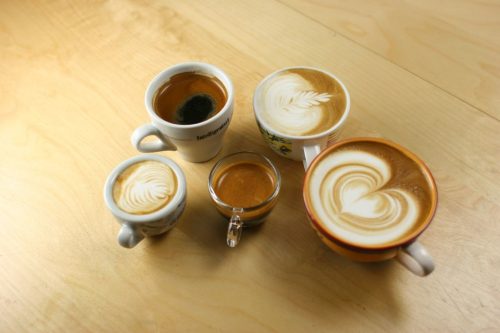
While a cold brew is a type of coffee drink that differentiates itself from the others by the way it is brewed, an iced coffee is instead different not by how it is brewed but by how it is served. An iced coffee, perhaps counterintuitively, is brewed with hot water but then chilled with ice cubes before being served. You can make an espresso iced coffee or an iced latte or an iced cappuccino just by serving the hot brewed versions over ice.
A bit similar, and still belonging to the iced coffee category, is an espresso tonic, in which two shots of espresso are chilled and then poured over ice, with tonic water and lime or lemon juice to finish it. Yes, fruit in coffee is a thing.
If we move around the world, any culture in which coffee is a daily beverage has developed their version of how to drink it. As coffee is truly a worldwide beverage, you can guess that there are nearly as many types of coffee drinks as there are countries. A very short selection of the most popular types of coffee around the world is:
- Affogato: born in Italy and very popular there, it is a shot of espresso with a scoop of vanilla ice cream.
- Café Bombon: popular in Spain, it’s an espresso with sweetened condensed milk.
- Café Cubano: from Cuba, it is a very strong, darkly roasted espresso with a generous amount of sugar added.
- Caffé Crema: a longer espresso served around Switzerland, Austria and North Italy.
- Ca phe sua da: a Vietnamese coffee drink that literally means “iced milk coffee”. It is a black coffee that is mixed with a quarter or half as much sweetened condensed milk and then poured over ice to chill it.
- Egg Coffee: another Vietnamese coffee drink in which black coffee, sugar, condensed milk and egg yolks are mixed together.
- Eiskaffee: a German coffee drink made with iced coffee and vanilla ice cream.
- Galao: an espresso with only foamed milk served in a tall glass. Originally from Portugal.
- Irish Coffee: coffee with whisky and cream, which can optionally be sweetened with sugar.
- Turkish Coffee: one of the oldest types of coffee drink in existence, it is very popular to this day around the Middle East and Greece (where it’s called Greek coffee). Made with a specific pot that brews grounds and water together for a long time, it is intense, bitter, usually sweetened with sugar.
And that is only touching the tip of all the recipes to make coffee around the world. Plenty more exist. The more you travel, the more you’ll discover how much coffee has morphed, integrated into the local cultures and mixed with all sorts of weird ingredients to make the tasting of it unique to the culture it was developed by.
As proof of our globalized world, new coffee drinks were invented in recent years, taking inspirations from these far away cultures or implementing ingredients that were not available or little known before. A series of truly unique types of coffee has recently flourished in a good deal of coffee drinking countries. Just to name a few:
- Bulletproof coffee: black coffee with about 2 tbsp of butter and 1 tbsp of coconut oil. To be blended until creamy.
- Chai Latte: an espresso made as a latte, thus with a lot of steamed milk, with the addition of spiced tea. Yes, coffee and tea together.
- Liqueur Coffee: a large category that includes all types of coffee drinks that involve the use of liqueurs. Any country has at least one, with the local favorite alcoholic concoction.
- Mocha: quite similar to a normal latte but with chocolate syrup in it.
- Cascara Coffee: somewhat a tea made with coffee leaves, it is a brew that doesn’t involve the coffee beans at all. It may be considered a tea by some.
How many brew methods are there?
We briefly touched the subject when describing the difference between a black coffee and an espresso. There are multiple ways to brew coffee, with various devices and sometimes very complex instructions. Once in cafes it was common to have just black coffee or espresso, with a few of the coffee drinks as described above. Nowadays the way coffee is brewed is as important if not more than the way it is served. Many cafes offer the possibility to have your coffee brewed with the method and device of your choosing.
For instance, many like the way coffee is made with a French Press. This is a little device that works by steeping the grounds in hot water for a few minutes and then using the integrated plunger to separate the grounds from the liquid. It is quite intense, heavy and flavorful, other than very easy to make.
Cold brew we have already discussed. The exact recipe varies a lot, mostly depending on how long you want the extraction to last. Around 8-18 hours is the usual advised time.
Very popular among coffee experts is brewing drip coffee. Sometimes also called “filter coffee”, it involves pouring hot water over the grounds, through a paper or metal filter. The coffee will physically slowly drip into the carafe below, thus the name. A drip coffee is a type of coffee that is quite mellow yet rich, that enhances the sweetness, acidity and fruitiness of many coffee beans.
Moka is an unusual and esoteric brewing method. Largely popular in Italy, it uses pressure to push the boiling water from the lower container upwards through the grounds, and the metal filter, into the upper container, from which it is served.
Commonly used in home settings, a percolated coffee is brewed by cycling hot water through the grounds using gravity. The more it is cycled, the stronger the coffee results (up to a point). Many coffee machines sold for home use implement this method.
A rare but fascinating brew method is the vacuum, or siphon. It consists of two chambers where the vapor pressure and vacuum move the coffee from one to another, extracting it from the beans and “refining” it. It is not common to find it, as it is somewhat more complex to use than the other methods.
What can you add to coffee?
Coffee wouldn’t be so popular if it wasn’t very customizable. We have seen many recipes, and all of them can be personalized by adding more ingredients, or removing some of them, if wanted. Given the basic taste profile of the coffee beans, which is strong and quite often either bitter or acidic, sweeteners are the most popular additions to coffee since the dawn of coffee brewing.
At the most basic, sugar is nearly always served alongside coffee, when not directly into it. Sugar has about 16 calories per 1 teaspoon and has a strong sweetening power. It dissolves very quickly in a hot beverage as coffee is and is the first ingredient to reach for when your brew isn’t as tasty as you wanted to make it more palatable. Coffee and sugar have been mixed together since when sugar became easily available and been served together ever since.
Milk is a close second in popularity to sugar. A lot of types of coffee drinks call for its addition and milk has proven for centuries to work very well with coffee, preserving its flavors and texture while sweetening it and softening the harshest aspects of black coffee. Steaming or frothing milk add textures that coffee by itself doesn’t possess. Cream, whipped or not, is another popular variant of milk that is used in enriching many types of coffee, giving them nearly a solid consistency. Normally milk contains both fats and sugars, so it may not be advisable to drink in large quantities for people on a diet. Low-fat milk and milk alternatives (like soy, almond, oat etc.) are fine to use in coffee, giving sometimes even better results than whole milk. As we have seen in the case of the affogato, even ice cream is normally added to coffee, enriching it but making it way more caloric than simple milk.
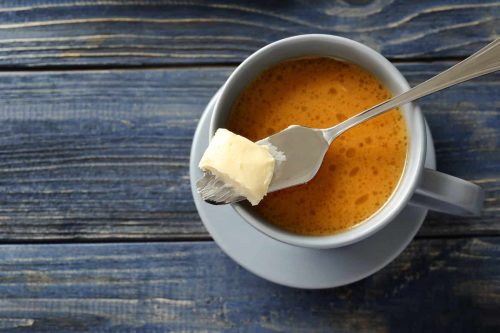
Honey is another strong sweetener that is sometimes added to coffee. As it is more viscous than milk, it requires a lot of swirling to make it completely dissolve in coffee. It has many subtypes, with different flavors. Honey in coffee isn’t as popular as it was decades ago, nor it is everywhere depending on the local coffee culture, yet it can be worth experimenting with it to give your coffee a distinct, unique profile.
An ingredient that you may not expect to be seen added to coffee is salt. Salt is zero calories, not sweet but more of a flavor-enhancer. It increases some aromatics that are within coffee, exalting them without changing the overall taste profile. A pinch of salt can change the drinking experience quite a bit.
How many calories are there in coffee?
Coffee by itself is just a brew of roasted beans, and unless you add some sweeteners, it won’t have many calories at all. An espresso has about 1 calorie, while a black coffee or Americano about 3. From there, depending on what you add and in what amounts, you can have a very low calories drink or a super-fatty and sugary one.
As a rough index, adding a splash of milk to an espresso, making a macchiato, brings the total calories amount to about 13-18. A cappuccino is anywhere between 110-135 calories. A flat white even more, 155-170. A simple latte should be around 120-150 calories. A chai latte, slightly more. The chocolate syrup in a mocha increases the calories to about 290. A bulletproof coffee is quite fatty with its use of coconut oil and butter, with some recipes reaching even 500 total calories.
You get the idea. The more milk, sugar or other sweeteners you have in your coffee, the more calories you will end up ingesting. If you add heavier stuff like butter or cream, you get a quite caloric drink. All these numbers are in their classic recipes, as given above. If you like to add a spoon or two of sugar more, then the calories numbers rise even higher.
Coffee by itself is very low in calories, but the way it is usually drunk as it is not. People worried about their calorie consumption would do well to stick to black coffee or unsweetened espresso. If absolutely wanted to soften the harshest flavors of coffee, using a milk alternative cuts the calories to half or even less. Experts of course prefer to taste coffee unsweetened, as it is the purest form of coffee you can have, but lots of common drinkers don’t like it without at least something sweet added into it. Learning to appreciate unsweetened coffee is an acquired taste for many, but a worthwhile effort for your health.
Conclusion
So here we are at the end of this guide on the types of coffee existing as of today. Despite being still very partial, it turned out to be a long guide. Hopefully, you now know more about what beans are used in coffee, what are the common varieties you can find in coffee stores, how different are the types of coffee drinks and what are the popular brewing methods. All this should prepare you to order at the fanciest coffee shops out there without sounding like an inexpert. Be aware that we only scratched the surface as an introduction to most to what the world of coffee can offer you. Experimenting yourself or trying new recipes at your local café will help you to connect the missing dots and advance on the path of becoming a coffee expert.